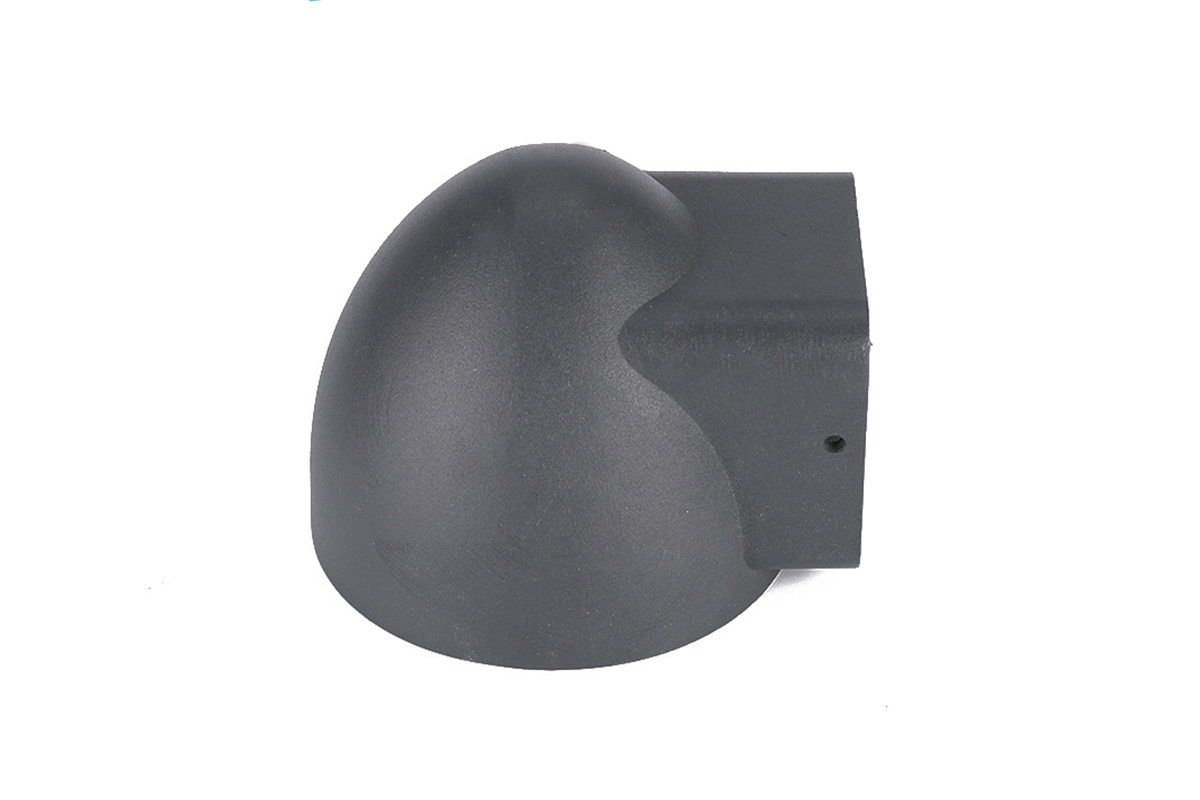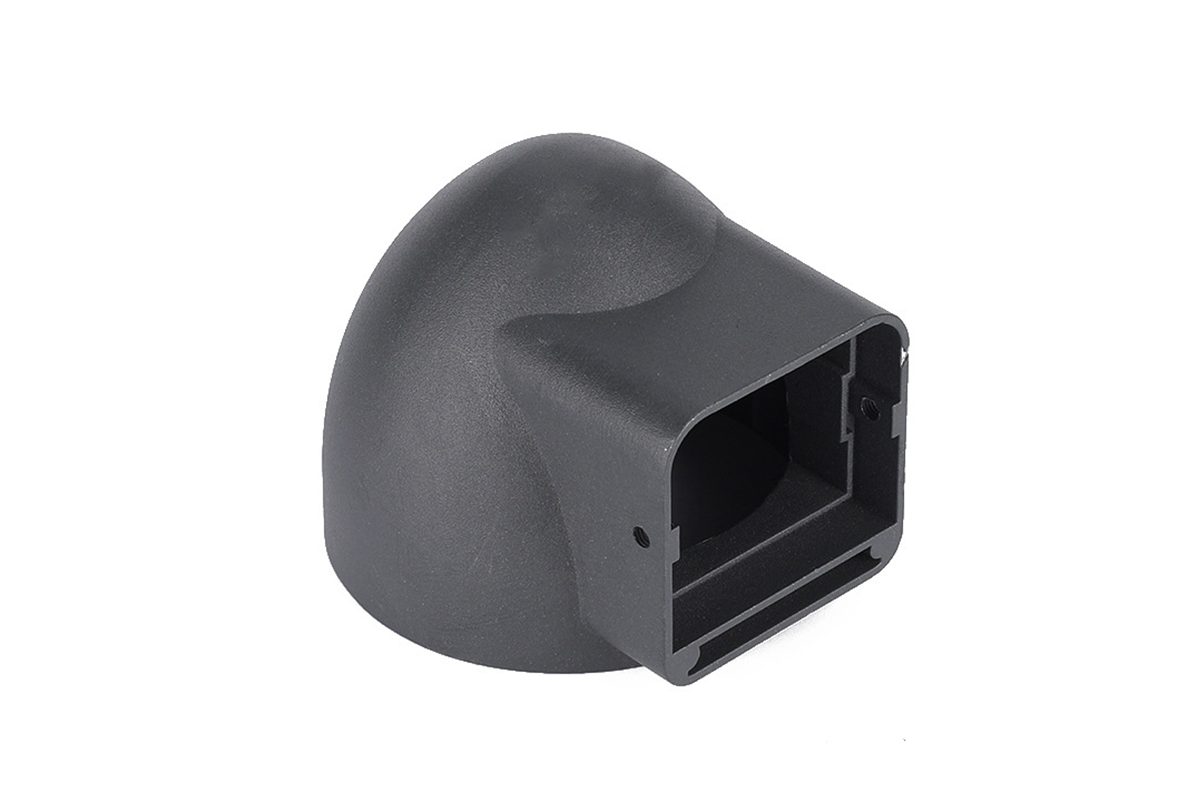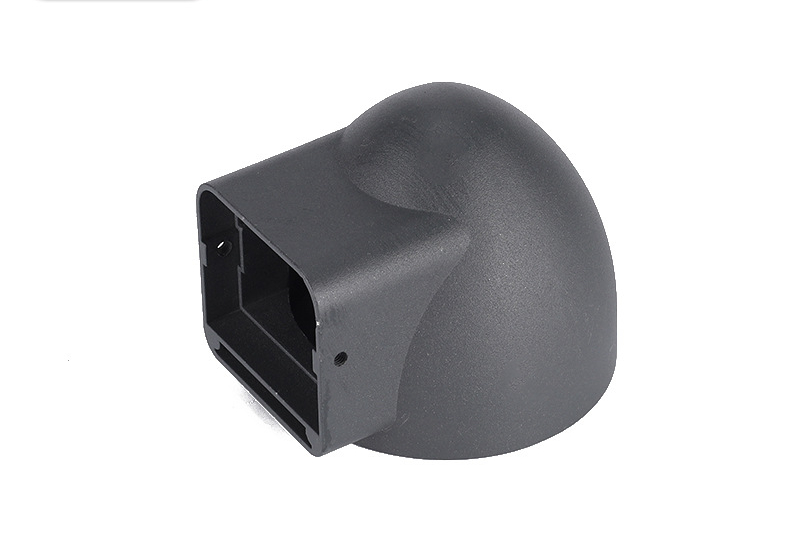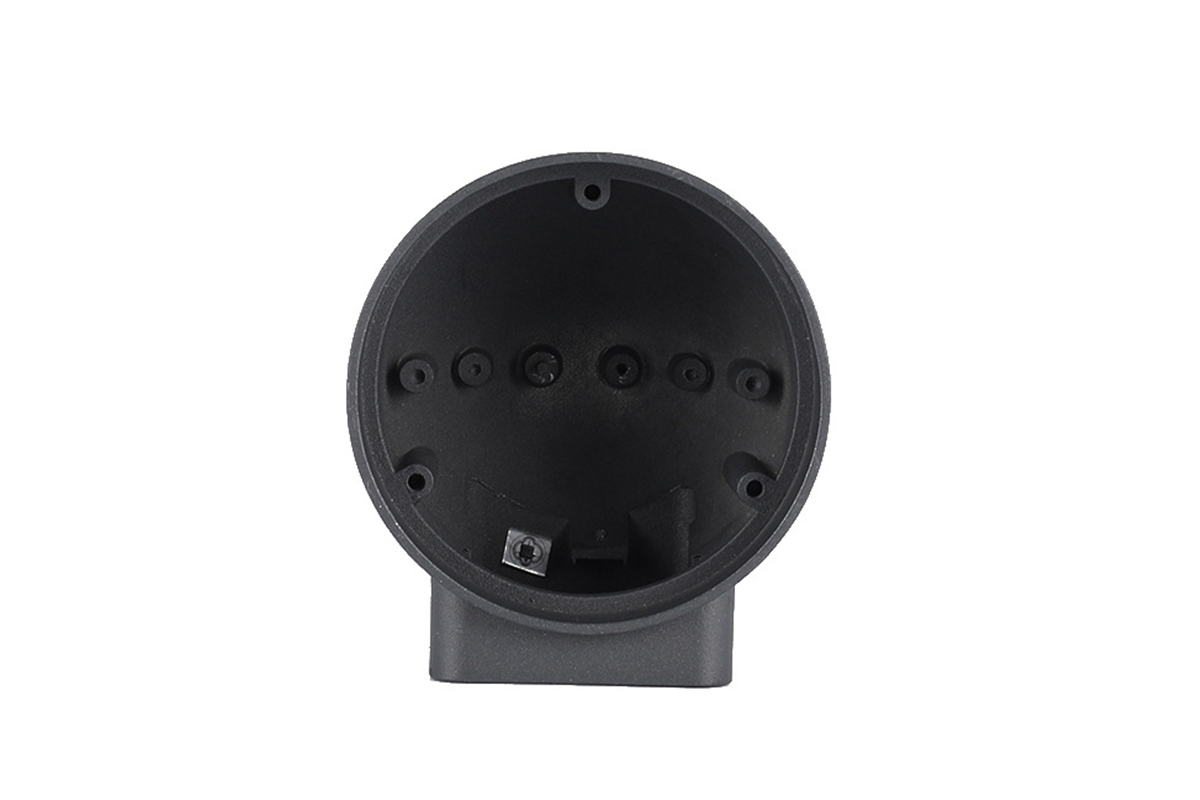Aluminum 383 Die Casting for Durable CCTV Camera Housings
Overview of CCTV Camera Housings
CCTV cameras are integral to modern security systems, providing surveillance and protection in various environments. The housing of these cameras plays a crucial role in ensuring their durability and functionality. These housings must withstand harsh weather conditions, physical impacts, and potential vandalism while protecting the sensitive electronic components. As a result, selecting a suitable material for CCTV camera housings is of paramount importance.
Introduction to Aluminum 383 Die Casting
Aluminum 383 is an alloy specifically designed for die casting, offering a balance of strength, durability, and workability. This material is favored in manufacturing CCTV camera housings due to its excellent mechanical properties and corrosion resistance. Aluminum 383 die casting produces complex shapes with high precision, making it an ideal choice for the intricate designs required in CCTV camera housings. The die-casting process ensures that each housing is consistent in quality and meets the stringent requirements of security applications.
In this blog, we will delve into the advantages of using Aluminum 383 for CCTV camera housings, provide an overview of the die-casting process, and discuss the challenges and solutions associated with this manufacturing method. You'll understand why Aluminum 383 die casting is preferred for robust and reliable CCTV camera housings.

Importance of Durable and Reliable Housings
The primary function of a CCTV housing is to protect the camera from external elements such as rain, dust, and extreme temperatures. A well-designed housing can also deter vandalism and tampering, ensuring the camera remains operational in high-risk areas. Therefore, the housing material must offer mechanical strength and resistance to environmental factors, which is why Aluminum 383 is often chosen.
Common Materials Used in Manufacturing
CCTV housings can be made from various materials, including plastics, stainless steel, and aluminum. Each material has its own set of advantages and disadvantages:
Plastics: Lightweight and cost-effective, but may lack the durability needed for harsh environments.
Stainless Steel: Highly durable and corrosion-resistant, but heavy and expensive.
Aluminum: Offers a good balance between strength, weight, and cost, making it a popular choice for many applications.
Aluminum 383, in particular, stands out due to its excellent castability, which allows for creating complex and precise shapes necessary for modern CCTV housings. This alloy also provides strength and corrosion resistance, ensuring long-term reliability and performance.
Advantages of CCTV Housing Aluminum Die Casting
Strength and Durability
Aluminum 383 alloy is renowned for its high mechanical strength and durability, making it an excellent choice for CCTV camera housings. The robust nature of this material ensures that the housing can withstand physical impacts, which is essential for security devices that may be subjected to vandalism or harsh environmental conditions. Moreover, Aluminum 383 retains its strength over various temperatures, ensuring reliable performance in diverse climates.
Precision and Complexity
One of the standout benefits of using Aluminum 383 in die casting is its ability to produce exact and complex shapes with tight tolerances, often within ±0.1 mm. This precision is crucial for CCTV camera housings, which require intricate designs to accommodate the camera lens, wiring, and other components. The die-casting process allows for producing detailed and complex geometries that would be difficult or impossible to achieve with other manufacturing methods.
Cost-Effectiveness
Aluminum die casting is an economical process, especially for large-scale production runs. The die-casting process is highly automated and efficient, lowering labor costs and cycle times. Additionally, Aluminum 383 has excellent fluidity, which minimizes material waste and ensures consistent quality across production batches. These factors contribute to the overall cost-effectiveness of using Aluminum 383 for CCTV camera housings.
Lightweight
Another significant advantage of Aluminum 383 is its lightweight nature. Aluminum alloys are much lighter than steel, making them easier to handle and install. It is particularly beneficial for CCTV camera housings, as it simplifies the installation process and reduces the load on mounting structures. Despite its lightweight, Aluminum 383 does not compromise on strength, providing a robust yet manageable solution.
Corrosion Resistance
Aluminum 383 offers excellent resistance to corrosion, an essential property for outdoor CCTV camera housings exposed to the elements. The natural oxide layer that forms on aluminum provides a barrier against moisture and other corrosive agents. This corrosion resistance can be further enhanced with powder coating, providing an additional protective layer that also improves the aesthetic appeal of the housing.
CCTV Housing Die Cast Process Overview
Die Casting
Die casting is a manufacturing process that involves injecting molten metal into a mold cavity under high pressure. This process is ideal for creating complex shapes with high precision and consistency. For CCTV camera housings, die casting with Aluminum 383 allows for producing intricate designs that meet exact specifications. The process begins with creating a die, usually made from hardened steel, designed to shape the molten aluminum into the desired form. The aluminum is heated until it becomes molten, then injected into the die under high pressure. The die is opened once the metal cools and solidifies, and the newly formed housing is ejected.
Polishing
After the die-casting process, the surface of the CCTV camera housing may have some imperfections or roughness. Polishing is used to smooth the surface, improving both the aesthetic appearance and the functional quality of the housing. Polishing can be performed using various methods, such as mechanical polishing with abrasive materials, chemical polishing using acid or alkaline solutions, or electro-polishing using an electric current to remove material. The choice of polishing method depends on the desired surface finish and the specific requirements of the housing.

Tapping
Tapping involves creating internal threads in the housing, which are necessary for assembly and mounting purposes. This step requires precision to ensure that the threads are accurately formed and align appropriately with screws and bolts. Tapping is typically done using high-speed tapping machines that can create consistent and precise threads. This process is critical for ensuring the housing can securely attach to other components and mounting structures.
Powder Spraying
Powder spraying, also known as powder coating, is a finishing process that involves applying a dry powder to the surface of the housing, which is then cured under heat to form a protective layer. This layer enhances the housing's resistance to corrosion, scratches, and UV radiation, ensuring long-term durability. The powder coating process begins with cleaning and preparing the surface to ensure proper adhesion. The powder is then electrostatically charged and sprayed onto the housing. Once the powder is applied, the housing is heated in a curing oven, where the powder melts and forms a smooth, uniform coating.
CCTV Housing Manufacturing Process Difficulties
Complexity in Mold Design
Designing molds for die casting is complex and challenging, especially for intricate components like CCTV camera housings. The mold must account for the detailed features and tight tolerances required for the housing. Additionally, the mold must facilitate proper flow and solidification of the molten aluminum to avoid defects. Balancing these factors while ensuring the mold's durability and longevity is a significant challenge.
Surface Defects
Surface defects such as porosity, roughness, and cold shuts are common issues in die casting. Porosity occurs when gas is trapped within the molten metal, creating voids that weaken the structure. Roughness can result from improper filling or cooling, affecting the housing's appearance and requiring additional polishing. Cold shuts happen when the molten metal does not fuse properly, creating weak spots. These defects can compromise the housing's integrity and performance.
Thermal Management
Managing heat during the die-casting process is critical to prevent thermal cracking and ensure the quality of the castings. The high temperatures in melting aluminum and the rapid cooling required to solidify it can lead to thermal stress. This stress can cause cracks or distortions in the housing, reducing its strength and durability. Effective thermal management is essential to maintain the integrity of the castings.
Dimensional Accuracy
Achieving precise dimensions consistently is another significant challenge in die casting. Variations in temperature, pressure, and material properties can affect the final dimensions of the housing. Maintaining tight tolerances (±0.1 mm) is crucial for ensuring the housing fits appropriately with other components and functions as intended. Dimensional inaccuracies can lead to assembly issues and reduced performance.

Solutions to Process Difficulties
Advanced Mold Design Techniques
Advanced Computer-Aided Design (CAD) and Computer-Aided Manufacturing (CAM) software are employed to address the complexity of mold design. These tools allow engineers to create precise and detailed mold designs, incorporating features that facilitate proper metal flow and solidification. Simulation software can also predict potential issues such as air entrapment and uneven cooling, enabling adjustments before the mold is manufactured. Regular maintenance and inspection of molds ensure they remain in optimal condition, reducing the likelihood of defects in the castings.
Quality Control Measures
Implementing rigorous quality control measures is essential to minimize surface defects. Non-destructive testing (NDT) methods such as X-ray inspection and dye penetrant testing can detect porosity, cracks, and other defects without damaging the housing. Regular inspections and adherence to strict quality standards help maintain consistency in production. Additionally, improving the die-casting process parameters, such as controlling the injection speed and pressure, can reduce the occurrence of defects.

Optimizing Thermal Control
Effective thermal management involves using proper cooling channels within the mold to ensure even heat distribution and controlled cooling rates. Real-time monitoring of mold temperature with sensors allows for adjustments during the casting process to prevent thermal stress. Employing high-performance lubricants and coatings on the mold can also reduce friction and thermal wear, extending the mold's life and improving casting quality. Preheating the mold to a controlled temperature before casting can minimize thermal shock and reduce the risk of thermal cracking.
Improved Surface Finishing Techniques
Enhanced surface finishing techniques can address roughness and other surface imperfections. Advanced polishing methods like robotic systems provide consistent and high-quality finishes. These systems can be programmed to handle complex geometries and maintain uniformity across large production runs. In addition to mechanical polishing, electro-polishing can be used to achieve a mirror-like finish, enhancing both the appearance and corrosion resistance of the housing. Ensuring a clean and controlled environment during powder coating application is crucial for achieving a uniform and durable finish.
Conclusion
Summary of Aluminum 383 Die Casting Benefits
Aluminum, 383 die casting, offers numerous benefits, making it an ideal choice for manufacturing CCTV camera housings. Its high mechanical strength and durability ensure the housings can withstand harsh environmental conditions and physical impacts. The precision and complexity achievable through die casting allow for intricate designs with tight tolerances, ensuring a perfect fit for all components. Additionally, the cost-effectiveness of die casting, combined with the lightweight nature of Aluminum 383, makes it a practical and economical solution for large-scale production. The alloy's inherent corrosion resistance, further enhanced by powder coating, guarantees long-lasting performance and aesthetic appeal.
Future Trends in CCTV Housing Manufacturing
The field of CCTV housing manufacturing is continuously evolving, with several emerging trends poised to enhance the industry further. Innovations in die-casting technology, such as vacuum die casting and semi-solid casting, are expected to improve the quality and efficiency of the process. These techniques can reduce defects and enhance the mechanical properties of the final products.
Moreover, developing new aluminum alloys with enhanced properties could offer even more significant performance benefits. For instance, alloys with improved thermal conductivity and increased strength-to-weight ratios are being researched to meet the growing demands of advanced security systems.
Automation and intelligent manufacturing are also set to play a significant role in the future of CCTV housing production. Integrating IoT (Internet of Things) and AI (Artificial Intelligence) in manufacturing can lead to real-time monitoring and optimization, resulting in higher efficiency and reduced production costs.
Sustainability is another critical trend. The use of recyclable materials and the implementation of eco-friendly manufacturing practices are becoming increasingly important. Aluminum, being highly recyclable, fits well within this paradigm, making it a sustainable choice for future manufacturing needs.
Innovations in Die Casting Technology
Advancements in die-casting technology are expected to address some of the current process difficulties and further enhance the quality and efficiency of manufacturing. For example, vacuum die casting can significantly reduce porosity by removing air from the mold cavity before injecting the molten metal. It results in denser, stronger castings with fewer defects. Similarly, semi-solid casting, which involves injecting a partially solidified slurry, can produce parts with improved mechanical properties and reduced shrinkage.
Emerging Materials and Techniques
Research and development in new aluminum alloys and composite materials will likely yield options with superior properties tailored to specific applications. Alloys with enhanced thermal conductivity, increased strength, and better wear resistance could provide even more robust and reliable solutions for CCTV camera housings. Additionally, additive manufacturing techniques, such as 3D printing, are being explored for creating custom molds and prototypes, reducing lead times and allowing for more complex designs.
